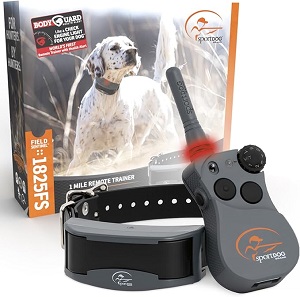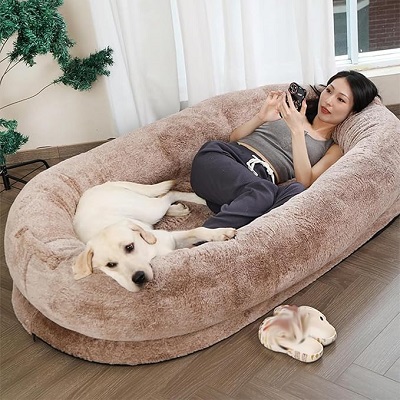
The Best Dog Breeds for Families with Young Children
The Best Dog Breeds for Families with Young Children: Safe and Friendly Choices
The Best Dog Breeds for Families with Young Children
When it comes to choosing a family dog, especially if you have young children, it's important to select a breed that can handle the energy, noise, and sometimes unpredictability that comes with a household full of little ones. Not all dog breeds are suited for the hustle and bustle of family life, so it's essential to choose one that is not only friendly and patient but also sturdy enough to handle a child's curiosity and exuberance.
In this article, we’ll explore some of the best dog breeds for families with young children, highlighting their temperaments, traits, and the qualities that make them great companions for kids.
What to Look for in a Family Dog
Before diving into specific breeds, let’s talk about what makes a dog suitable for families with young children:
Essentials for Your Newly Adopted Pet
Welcoming a shelter pet into your life is a beautiful journey. Here are some handpicked items to help your new friend feel safe, loved, and right at home:
- Temperament: A good family dog should be friendly, patient, and tolerant of loud noises, quick movements, and occasional rough handling. The dog should enjoy human company and be able to handle the excitement of a busy household.
- Energy Level: Dogs that can match the energy level of young children tend to do better in a family environment. High-energy breeds need plenty of exercise and playtime, which can also keep kids active.
- Size: While some families prefer smaller dogs for their easier handling and space-saving, larger dogs can also make great companions if they have the right temperament and are comfortable with kids. It’s important to choose a breed that is physically capable of interacting with children safely.
- Trainability: Children and dogs need a stable, well-trained relationship. A breed that is highly trainable and responds well to commands can make managing daily life with young children easier.
- Gentleness: It’s crucial to find a dog that is gentle and not prone to aggressive behaviors. This will give you peace of mind knowing your dog will be tolerant and kind even when children are being their most playful or rowdy.
Best Dog Breeds for Families with Young Children
Now, let’s explore some of the best dog breeds that tend to thrive in family environments, especially around young children.
1. Labrador Retriever
Temperament: Labradors are often considered one of the best family dogs. They are friendly, gentle, and patient, making them ideal for families with children. They are also known for being tolerant of rough play and are typically great with kids of all ages.
Energy Level: Labradors are energetic and love to play, which is perfect for active children. They enjoy outdoor activities like fetch, hiking, or swimming, and they need daily exercise to stay healthy and happy.
Size: Medium to large (55-80 pounds)
Why They're Great for Kids: Their friendly, laid-back nature and willingness to play with kids for hours make them an excellent choice for families with young children.
2. Golden Retriever
Temperament: Golden Retrievers are known for their gentle, affectionate nature. They are incredibly patient and get along well with children, making them another top choice for families. Golden Retrievers are also highly social dogs and crave human companionship.
Energy Level: Moderately active, requiring regular exercise, such as walks, runs, or play sessions. They are adaptable to both high-energy and more relaxed families.
Size: Medium to large (55-75 pounds)
Why They're Great for Kids: Their calm demeanor and natural nurturing instincts make them wonderful companions for children. Golden Retrievers are often known to be “nanny dogs,” watching over and protecting kids.
3. Beagle
Temperament: Beagles are friendly, curious, and have a lot of energy. They’re affectionate dogs who enjoy being part of family activities. While they can be independent at times, they generally form strong bonds with family members, including kids.
Energy Level: Beagles are moderately active and love to run and play. They need regular exercise and mental stimulation.
Size: Small to medium (20-30 pounds)
Why They're Great for Kids: Their playful and curious nature makes Beagles a fun breed for kids. They’re small enough for children to handle but sturdy enough to withstand rough play.
4. Pug
Temperament: Pugs are known for their charming and humorous personalities. They’re playful, sociable, and adaptable, making them great companions for families with young children. Pugs are also known to be particularly good at handling the chaos of family life.
Energy Level: Pugs have a moderate energy level and enjoy short walks and indoor play. While they don’t require as much exercise as larger breeds, they do enjoy being active with their family.
Size: Small (14-18 pounds)
Why They're Great for Kids: Pugs are affectionate and enjoy snuggling, which makes them perfect for children who want a lap dog. They’re also sturdy, making them a good choice for younger kids who may not be as gentle.
5. Boxer
Temperament: Boxers are energetic, playful, and protective, with a natural instinct to be loyal to their family. They are great with kids, known for their patience and playful behavior. Boxers tend to be clownish, often entertaining children with their goofy antics.
Energy Level: Boxers are high-energy dogs that need a lot of exercise and playtime. They love running and playing games, so they are ideal for active families with older children who can engage in these activities.
Size: Medium to large (50-80 pounds)
Why They're Great for Kids: Their playful and protective nature makes them a good choice for families with young children. They are known for being patient and tolerant, even with rowdy little ones.
6. Cavalier King Charles Spaniel
Temperament: Cavalier King Charles Spaniels are affectionate, gentle, and extremely sociable. They thrive in family settings and love being around people, including children. Their calm demeanor and desire to please make them a wonderful companion for younger children.
Energy Level: They have a moderate energy level and enjoy daily walks and playtime. They’re well-suited to families with a more relaxed lifestyle.
Size: Small (13-18 pounds)
Why They're Great for Kids: Cavaliers are friendly and easygoing, making them great for younger children. Their small size also makes them ideal for smaller homes or apartments.
Temperament: Bernese Mountain Dogs are gentle giants with a calm and affectionate demeanor. They’re known for being patient and tolerant with children, and they enjoy being part of family activities. While they are large, they’re often surprisingly gentle and well-behaved.
Energy Level: Bernese Mountain Dogs are moderately active and enjoy regular exercise. While they are happy to play, they’re also content to relax indoors with their family.
Size: Large (70-115 pounds)
Why They're Great for Kids: Their size and strength make them excellent playmates for older children, and their loving, patient nature makes them ideal for families with kids.
Things to Keep in Mind When Choosing a Family Dog
While the above breeds are excellent for families with children, it’s essential to remember that a dog’s temperament and behavior are influenced by more than just their breed. Training, socialization, and individual personalities play a big role in how a dog interacts with children. Always consider the following:
- Early Socialization: Ensuring your dog is well-socialized from a young age can help them become more comfortable with kids, other pets, and new environments.
- Training: Basic obedience training is crucial for a dog that will be around young children. Teaching commands like “sit,” “stay,” and “leave it” can help ensure your dog’s safety and help maintain a harmonious household.
- Supervision: Even the most child-friendly dog should be supervised when interacting with young children. Kids may not always understand how to handle a dog gently, so it’s important to be vigilant, especially during playtime.
Conclusion
Choosing the right dog breed for a family with young children can make all the difference in creating a happy, healthy home. While some breeds are naturally more suited to family life, it’s important to remember that every dog has its unique personality. With the right care, attention, and training, any dog can become a beloved member of the family.
Whether you choose an active breed like the Labrador Retriever or a smaller, affectionate dog like the Cavalier King Charles Spaniel, the key is to find a breed that aligns with your family’s lifestyle, energy level, and love for dogs.
Affiliate Products
We may earn a small commission when you shop through our links — it helps us keep sharing love and care for every dog out there, at no extra cost to you.
Up to 75% Discount

Dog Collar with Health Monitoring
BUY NOW »
Up to 55% Discount

Luxury Faux Furhuge Napping Bed
BUY NOW »

